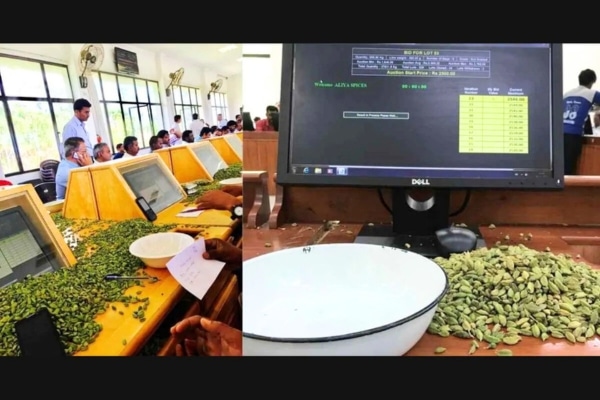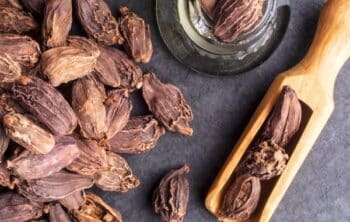Contents
How Does Cardamom Auction Work? A Comprehensive Guide
Cardamom, often referred to as the “Queen of Spices,” is a highly sought-after spice used worldwide in cooking, traditional medicine, and wellness practices. Given its demand and premium value, the trade and distribution of cardamom are highly organized, with auctions playing a pivotal role in ensuring fair pricing and consistent quality.
If you’ve ever wondered, “How does cardamom auction work?”, this guide will break down the process, explain its significance, and highlight how it impacts producers, buyers, and the global spice market.

What Is a Cardamom Auction?
A cardamom auction is a formal trading mechanism where cardamom is sold in bulk to buyers, often conducted in specialized marketplaces. Auctions serve as a platform for farmers, traders, and exporters to buy and sell cardamom, ensuring transparency, competitive pricing, and quality control.
Primarily conducted in countries like India, one of the world’s largest producers of cardamom, these auctions are crucial for maintaining the spice’s premium reputation in the global market.
The Importance of Cardamom Auctions
1. Fair Pricing for Farmers
Cardamom auctions help small-scale farmers get fair prices for their harvests by offering a competitive environment where multiple buyers bid for the spice.
2. Quality Control
Auctions ensure that only high-quality cardamom reaches the market. Lots are graded and inspected before being auctioned, benefiting both buyers and end consumers.
3. Efficient Distribution
By centralizing the buying and selling process, auctions streamline the distribution of cardamom to domestic and international markets.
4. Market Regulation
Cardamom auctions prevent price manipulation and ensure transparency, fostering trust among stakeholders in the supply chain.
How Does Cardamom Auction Work?
The cardamom auction process involves several well-defined steps, each designed to ensure fairness, quality, and efficiency.
1. Harvesting and Grading of Cardamom
Farmers harvest cardamom pods when they reach peak maturity. The pods are then sorted and graded based on factors like:
- Size
- Color
- Aroma
- Oil Content
Grades are crucial as they directly influence the price during the auction.
2. Submission to Auction Houses
Farmers or their representatives submit graded lots to registered auction centers. In India, auction houses are regulated by organizations like the Spices Board of India to ensure compliance with quality and pricing standards.
Each lot is weighed, inspected, and assigned a lot number for identification.
3. Pre-Auction Inspection by Buyers
Before the auction begins, buyers (including traders, exporters, and wholesalers) are allowed to inspect the cardamom lots. This helps them assess the quality and decide on their bidding strategy.
4. The Auction Process
The auction itself is typically conducted in a live setting or through an online platform. Here’s how it works:
- Auctioneer’s Role: An auctioneer facilitates the bidding process, starting with a base price determined by market trends and the quality of the lot.
- Bidding: Buyers place competitive bids for each lot. Bids can rise quickly, especially for high-quality cardamom.
- Winning Bid: The highest bidder wins the lot and secures the right to purchase it at the agreed-upon price.
5. Post-Auction Procedures
After the auction, the following steps occur:
- Payment: Buyers make payments to the auction house, which then pays the farmers after deducting a small commission.
- Packaging and Distribution: Purchased cardamom is packed and shipped to the buyer’s desired location, ready for processing, retail, or export.
Types of Cardamom Auctions
1. Traditional Live Auctions
These are conducted in physical auction houses, with buyers and auctioneers participating in person.
2. Online Auctions
With advancements in technology, many auctions are now held online, allowing buyers from around the world to participate. This increases competition and ensures better pricing for farmers.
Key Players in the Cardamom Auction Process
| Player | Role |
|---|---|
| Farmers | Supply raw cardamom to auction houses. |
| Auction Houses | Organize and regulate the auction process, ensuring quality and fairness. |
| Buyers | Include traders, wholesalers, exporters, and processors who purchase cardamom for various uses. |
| Spices Board | Monitors auctions, enforces standards, and promotes the interests of farmers and the industry. |
Benefits of Cardamom Auctions
| Benefit | Description |
|---|---|
| Transparency | Ensures fair pricing by creating a competitive environment. |
| Quality Assurance | Only graded and inspected cardamom is auctioned, maintaining market standards. |
| Global Reach | Online auctions enable international buyers to participate. |
| Farmer Empowerment | Farmers receive fair prices for their produce, improving their livelihoods. |
Challenges in Cardamom Auctions
While the auction system is efficient, it’s not without challenges:
- Price Volatility
Cardamom prices can fluctuate significantly due to changes in demand, weather conditions, and market trends. - Accessibility for Small Farmers
In some regions, small-scale farmers may face difficulties accessing auction centers or online platforms. - Dependence on Middlemen
Farmers often rely on middlemen to navigate the auction process, which can reduce their profit margins. - Quality Variations
Ensuring consistent quality across lots can be challenging, especially during peak harvest seasons.
How Cardamom Auctions Impact the Global Market
Cardamom auctions play a significant role in shaping the global spice market. As one of the largest exporters of cardamom, India relies heavily on its auction system to meet international demand.
- Pricing Trends: Auction prices set benchmarks for global cardamom prices.
- Export Quality: Auctions ensure that exported cardamom meets stringent quality standards.
- Supply Chain Stability: By centralizing the trade process, auctions create a stable and efficient supply chain.
Frequently Asked Questions (FAQs)
1. Where are cardamom auctions held?
Cardamom auctions are primarily conducted in India, with key centers in Kerala and Tamil Nadu.
2. Can anyone participate in a cardamom auction?
No, participants must be registered buyers, traders, or exporters with the auction house or relevant authorities.
3. How is the base price of cardamom determined?
The base price is influenced by factors like quality, demand, harvest yields, and market trends.
4. Are online cardamom auctions reliable?
Yes, online auctions are regulated by governing bodies like the Spices Board of India, ensuring transparency and fairness.
5. How are farmers paid after an auction?
Farmers are paid directly by the auction house after deducting a small commission.
6. What is the role of the Spices Board in cardamom auctions?
The Spices Board regulates the auction process, enforces quality standards, and supports farmers through training and subsidies.
7. Is black cardamom sold in auctions?
Yes, but green cardamom dominates auctions due to its higher demand and premium pricing.
8. What happens if a lot doesn’t sell at auction?
Unsold lots may be re-auctioned or sold directly to buyers at a negotiated price.
9. How do auctions benefit exporters?
Auctions ensure a consistent supply of high-quality cardamom, making it easier for exporters to meet international demand.
10. Are cardamom auctions sustainable?
Efforts are being made to make the system more sustainable, including support for eco-friendly farming practices.
Conclusion
Cardamom auctions are an essential part of the spice’s journey from farm to table. By ensuring fair pricing, quality control, and efficient distribution, they benefit farmers, buyers, and consumers alike. Whether you’re a health enthusiast curious about the origins of your favorite spice or a trader exploring the industry, understanding how cardamom auctions work provides valuable insights into the global spice trade.
Would you like to learn more about cardamom farming, pricing trends, or its health benefits? Let us know in the comments! 😊



